
Local Landscape as a Mirror of Global Transformations
SHAARBEK AMANKUL
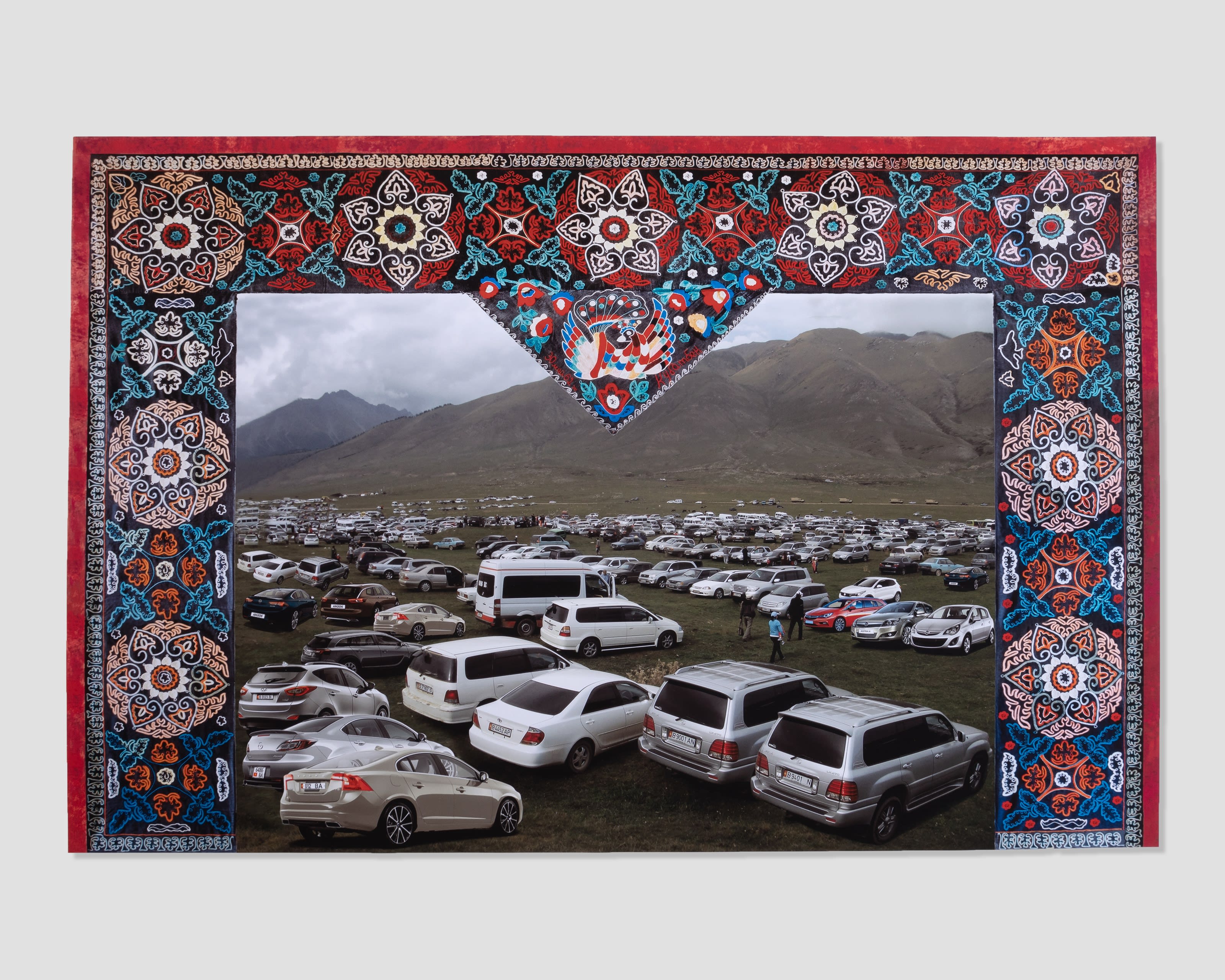
SHAARBEK AMANKUL | The New Breeds of the Steppe, 2023. Digital print, 20 3/8 x 31 in (51.8 x 78.7 cm).
Local landscapes are not merely geographical spaces; they are living chronicles reflecting the complex processes shaping our contemporary world. The changes in post-Soviet cities and the steppes of Kyrgyzstan reveal how global forces—the digital revolution, capitalism, and cultural homogenization—intertwine with local traditions, contemporary life, and identity.
Where nomadic movements and established rituals once prevailed, new forms of life and communication have emerged. Traditional practices stand at a crossroads between preservation and transformation, resistance and adaptation. Globalization brings not only technological progress but also challenges: cultural standardization, digital colonization, and the erosion of unique meanings and collective memory. This visual research project involved sixty tush kiiz—traditional hand-embroidered carpets crafted by Kyrgyz women from the 1950s to the 1980s. Previously quotidian ritual objects, the reproductions of these carpets frame the photos, creating dialogue between image and textile, past and present, craft and contemporary visual thinking. These photos investigate the profound post-Soviet shift to capitalism, during which identities were renegotiated, social bonds restructured, and ideologies straddled.

SHAARBEK AMANKUL | Urban Celebrations, 2011. Digital print, 20 3/8 x 31 in (51.8 x 78.7 cm).
This series critically examines how cultural heritage transforms into a visual product. A conscious rejection of folkloric romanticism, it analyzes the power of representation not only as an artistic gesture but also as a form of critical anthropology. These images of cultural ruptures are about the survival of images and bodies within global regimes of visibility and invisibility.
Offering a critical lens through which to rethink digital colonization and the symbolic violence of commercialization, these photos of Kyrgyzstan capture the cultural mutation unfolding across different geographies and serve as a form of cultural resistance in a world where acceleration, loss, and adaptation have become the norm. This series positions culture as a field of struggle for memory, identity, and the right to one’s own future; and invites viewers to consider the local landscape as a gateway to global processes and as a site where a new language might emerge for discussing the world we continue to navigate and call home.
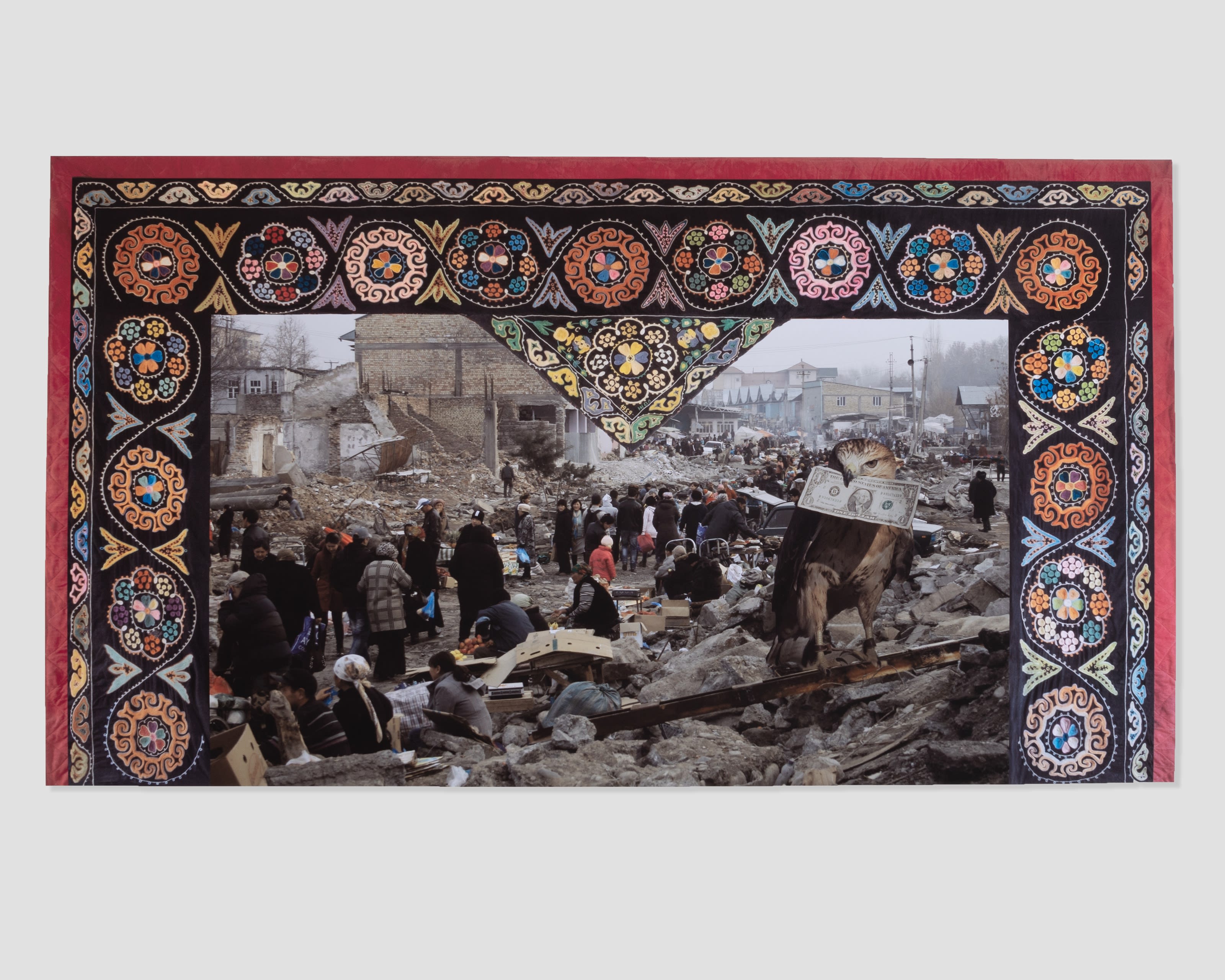
SHAARBEK AMANKUL | The Guardian of Emptiness, 2022. Digital print, 17 3/8 x 31 in (44.1 x 78.7 cm).
In Dialogue with the Artisans of Central Asia
Craft as a Critical Terrain of Place, Memory, and Resistance
HEIDI BRANDOW
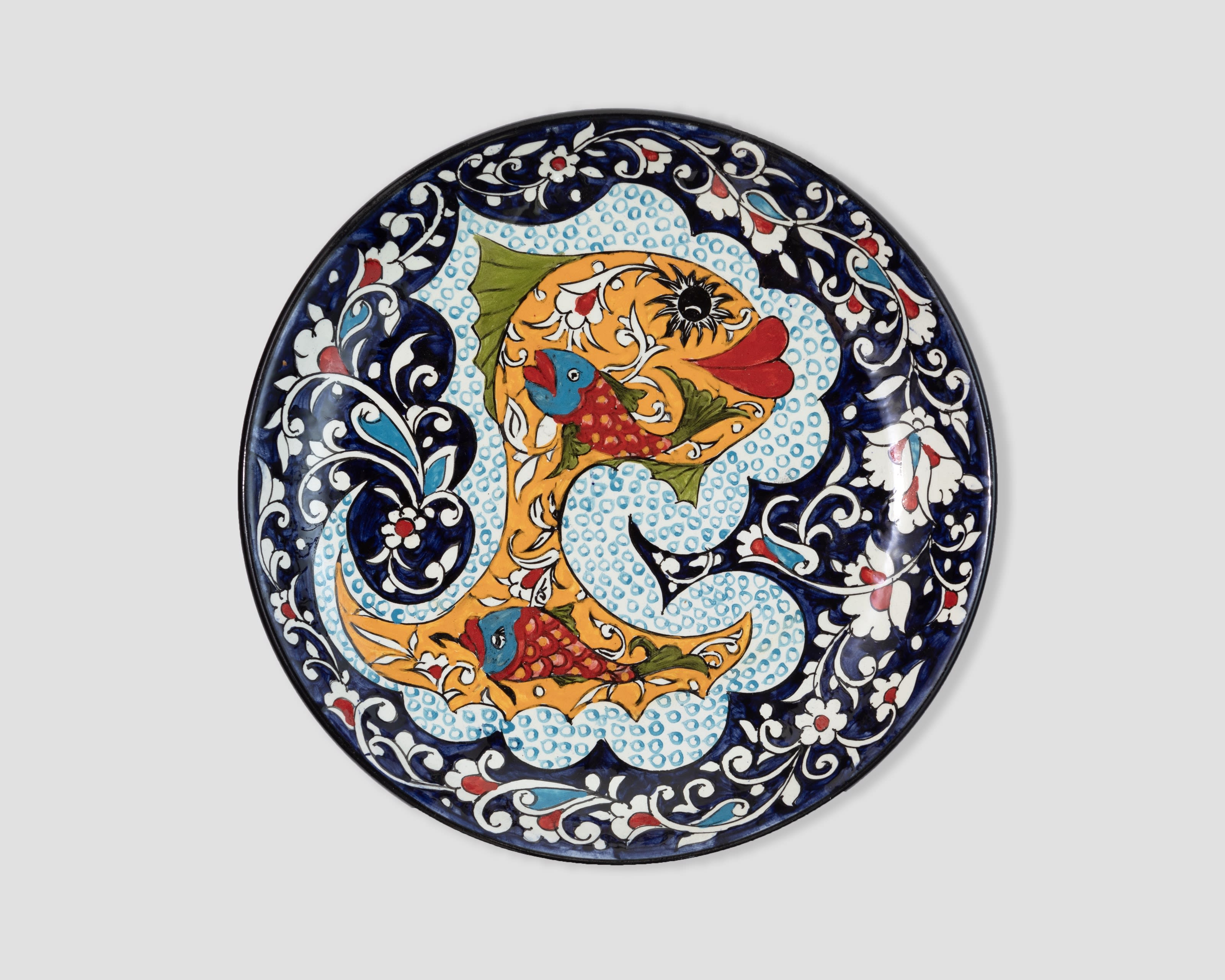
SHAARBEK AMANKUL and HEIDI BRANDOW | Echo of the Golden Fish, 2025. Ceramic, diameter 11 in (27.9 cm).
The collaborative practice of Heidi Brandow and Shaarbek Amankul unfolds as a deep inquiry into the language of place, not as a neutral setting or passive backdrop, but as an active agent in the production of meaning. In their engagements with artisans from Uzbekistan and Kyrgyzstan, Brandow and Amankul treat traditional craft not as static heritage or folkloric artifact, but as a living, unstable language articulated through material, gesture, silence, and absence. In this work, place is not depicted; it is performed, negotiated, and embodied. Clay, metal, felt, and textile become sites where the sedimented histories of colonization, ecological degradation, gendered labor, and craft marginalization are reactivated. These collaborations are not acts of citation or appropriation, but of co-making, mutual unlearning, and ethical attention. They resist extractive models of artistic production and instead cultivate a temporality grounded in shared process and embedded knowledge.
In partnership with Rishtan ceramicists in Uzbekistan, the artists explore clay as ecological and mnemonic matter. The ceramic works reflect Central Asia's disappearing flora and fauna, not through illustration, but through surface, fragility, and absence. Clay becomes a quiet archive of extinction—a meditation on impermanence, environmental collapse, and the unstable line between tradition and transformation.
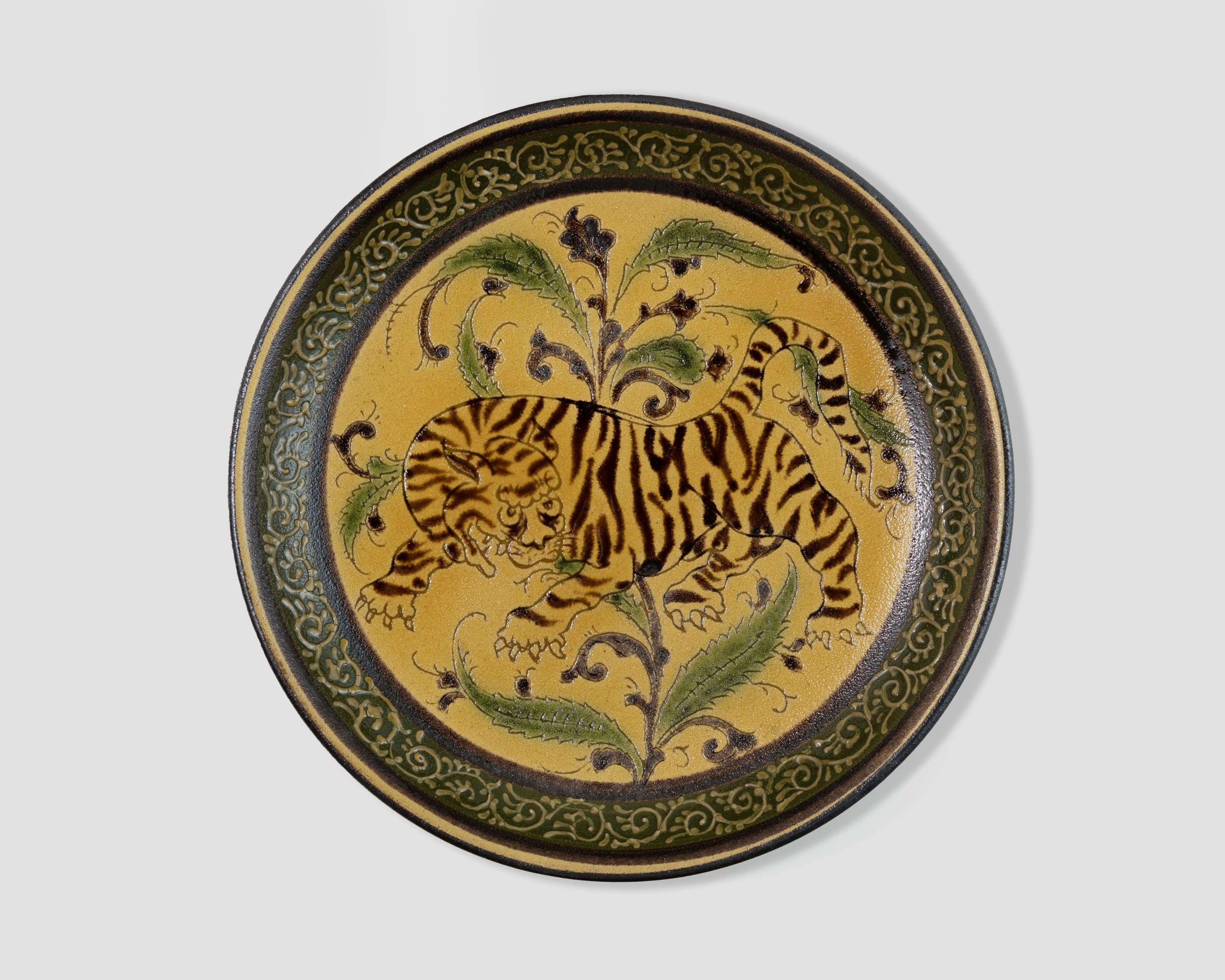
SHAARBEK AMANKUL and HEIDI BRANDOW | Turanian Tiger—A Ghost Species, 2025. Ceramic, diameter 11 1/4 in (28.6 cm).
With a Fergana-based jeweler, Brandow and Amankul reimagine ornament as cosmology. Traditional metalwork techniques are used to create an experimental totem, a symbolic, open-ended form that collapses the boundaries between human, animal, and celestial realms. The object becomes a speculative bridge, invoking continuity between the personal and the planetary.
In collaboration with felt makers in Kyrgyzstan, the focus shifts toward tactility, ritual, and care. Felt is approached as a sensory archive, a carrier of domestic, often invisible, knowledge. It absorbs climate, gesture, and time, embodying the rhythms of female labor and everyday resilience. These works resist the gallery’s visual dominance and instead invite proximity, slowness, and embodied engagement.
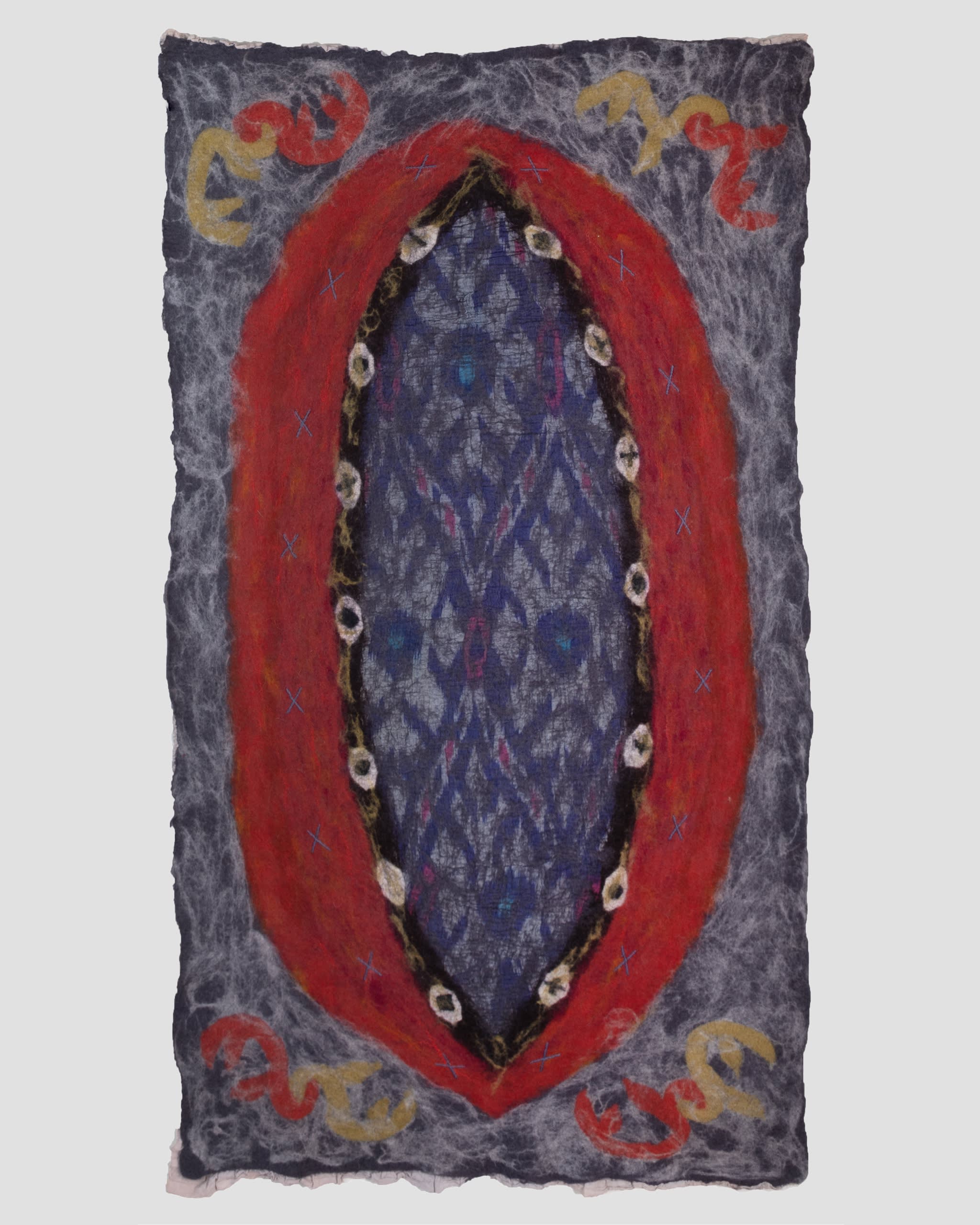
SHAARBEK AMANKUL and HEIDI BRANDOW | Womb Matrix, 2025. Ala-kiyiz (Felted wool), 62 x 33 1/2 in (157.5 x 85.1 cm).
Brandow and Amankul do not attempt to reconcile contemporary art with traditional craft. Instead, they cultivate a productive space of friction between global systems of meaning and local epistemologies; between aesthetic form and lived function; between the ethics of transmission and the politics of disappearance. Their practice reveals the contested authority of materials: what is remembered, what is silenced, and who is entitled to speak through a place. This exhibition presents only fragments of a much larger, ongoing dialogue. Many works remain in Central Asia, embedded in the landscapes and communities that shaped them. What is shown here is not a closed body of work, but a living process; a constellation of voices, gestures, and materials through which the land continues to speak.
EXHIBITION STATEMENT
CLEMENTINE BORDEAUX
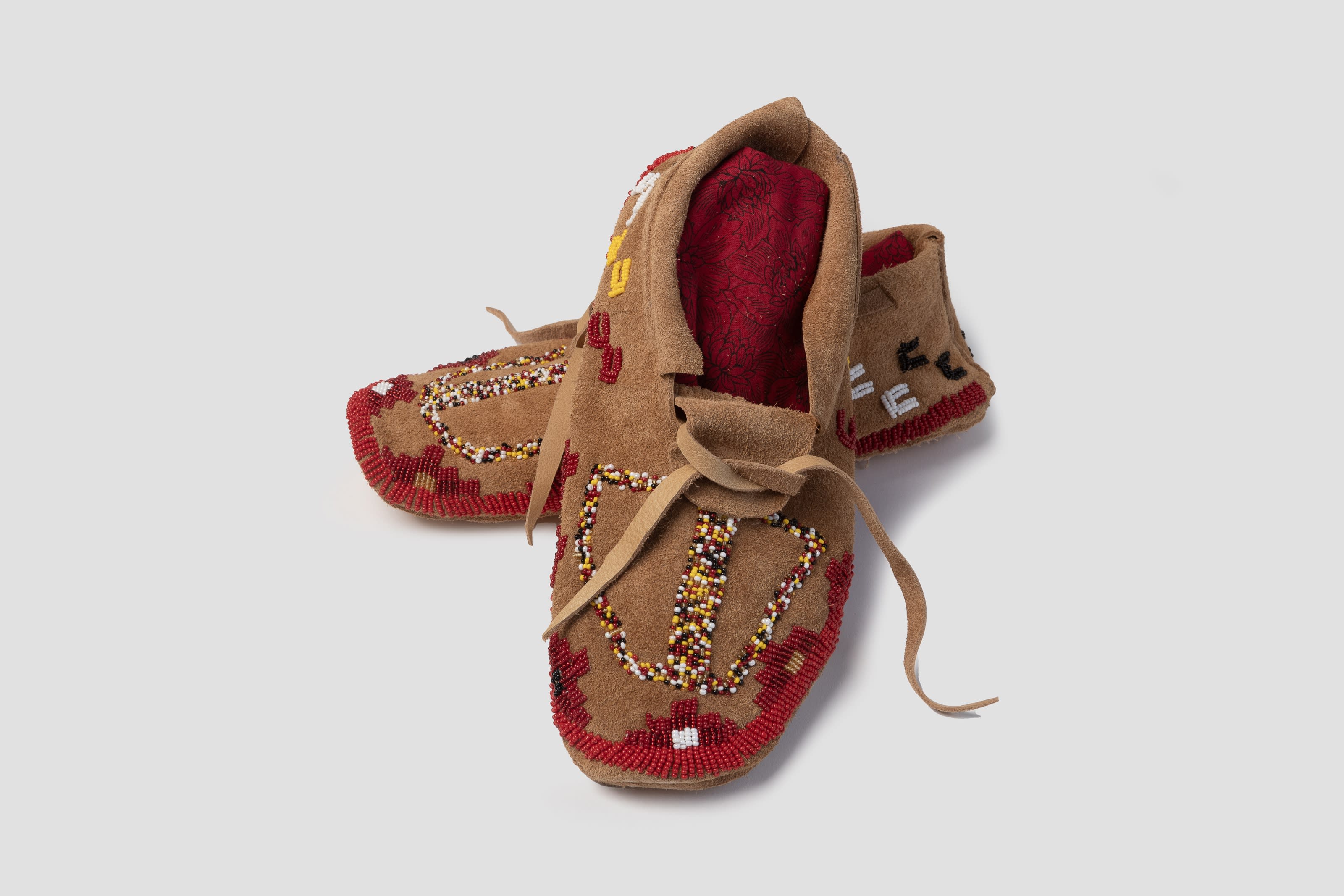
CLEMENTINE BORDEAUX | A Humble Walk to the Mountains, 2025. Cowhide and glass beads; cotton, sage, and sweetgrass, 3 1/2 x 4 1/4 x 10 in (8.9 x 10.8 x 25.4 cm).
I wanted to imagine a humble walk to the Kyrgyzstan mountain range from a Lakota perspective. Lakota adornment, both historically and contemporarily, reflects life experiences that have had a lasting impact. The symbols on the moccasins are from Lakota intellectual traditions. On the side are horse prints, which echo the relationship of Kyrgyzstan and Lakota communities with the horse nation.
While visiting Kyrgyzstan, I wondered if our horses in the Northern Plains were/are descendants of the horses from the Kyrgyzstan region. The prints that “travel” to the mountains form the shapes that adorn the toe and the top of the foot of the moccasins. The mountain shapes indicate the mountains that we visited in Kyrgyzstan. The colors are inspired by the four directional colors used ceremonially in Lakota ritual and prayer. The similarities between Northern Plains tribal nomadic life and Kyrgyz indigeneity are reflected in the creation of the moccasins.
These humble moccasins—the first pair I ever made—are my language of place, because nomadic life means being able to move quickly and easily.
Keia ‘Āina / Keia Kino – This Land / This Body
HEIDI BRANDOW
As a Diné and Kanaka Maoli artist living in diaspora, my practice is grounded in visual storytelling, Indigenous knowledge systems, and environmental memory. Keia ‘Āina / Keia Kino – This Land / This Body is an ongoing interdisciplinary project that explores the interwoven displacement of Native Hawaiians and Hawai‘i’s endemic plants and animals. Through painting, photography, video, and community engagement, this work examines the ecological precarity of Hawai‘i alongside the enduring cultural resilience of our people—both on our ancestral homelands and across the diaspora.
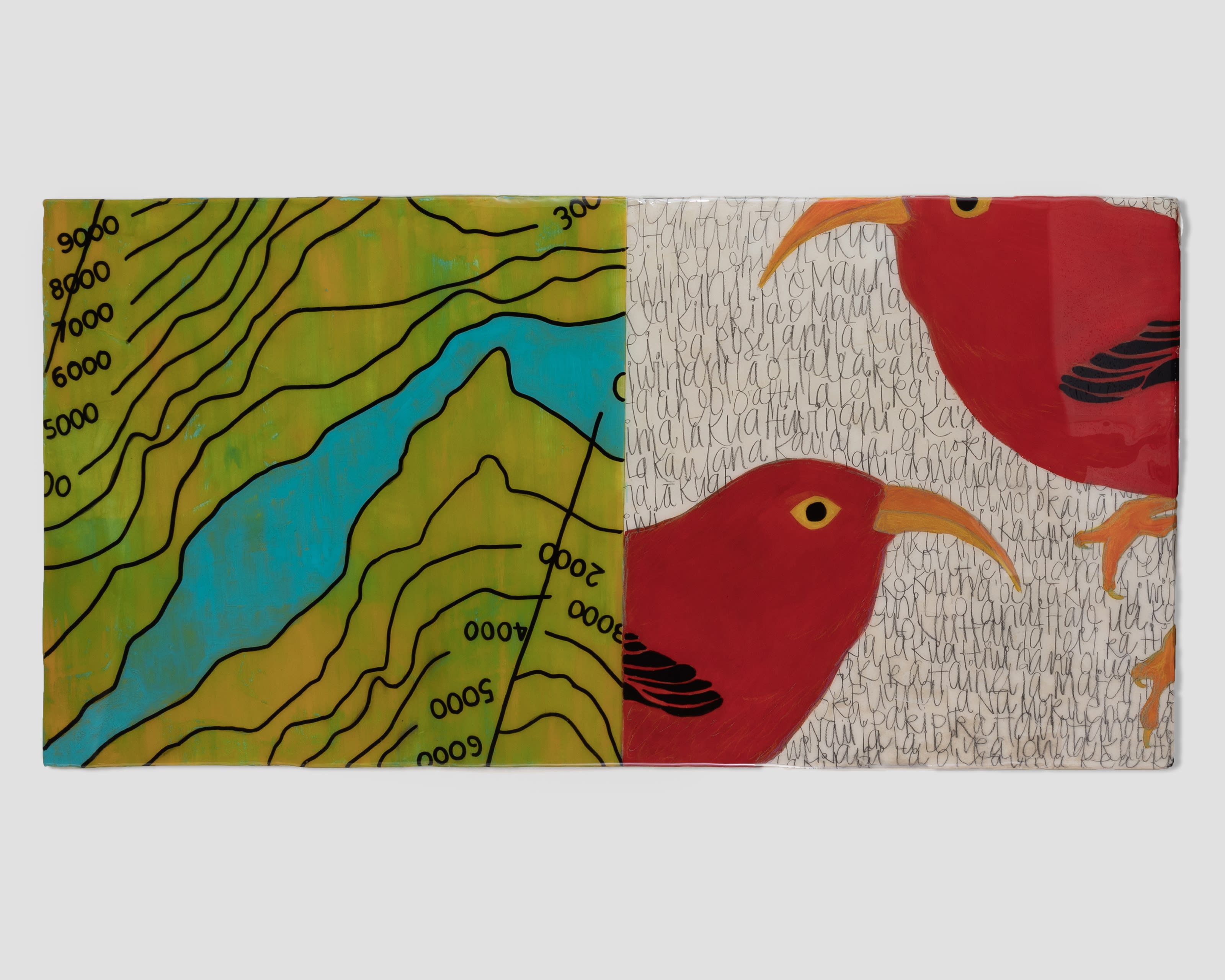
HEIDI BRANDOW | remembering your name, 2025. Acrylic, graphite, plaster, and resin on wood, 24 x 48 x 2 1/2 in (61 x 121.9 x 6.3 cm).
This project is both a meditation and a call to action. By centering ecologically vulnerable places such as Kilauea, Mauna Kea, Haleakala and other wahi pana, I aim to document and uplift the voices of our endangered relatives, like the ʻākohekohe (crested honeycreeper) and the silversword (sacred sites)—not as passive symbols of loss, but as kin whose survival is inseparable from our own. These beings hold stories, carry memory, and exist within our cosmologies and ceremonies. They are part of us.
My work draws connections between the loss of biodiversity and the systemic displacement of Kanaka Maoli driven by ongoing settler colonialism, health disparities, climate change, and limited access to land. Each painting, photograph, and piece of documentation is accompanied by moʻolelo (stories), archival research, and reflections, often shared through the mele (songs) of Hawaiʻi, to illuminate the deep relational knowledge that binds our bodies to the land. These works serve as markers of intergenerational memory, honoring the enduring relationships between our people, our homelands, and the plants and animals that sustain us.
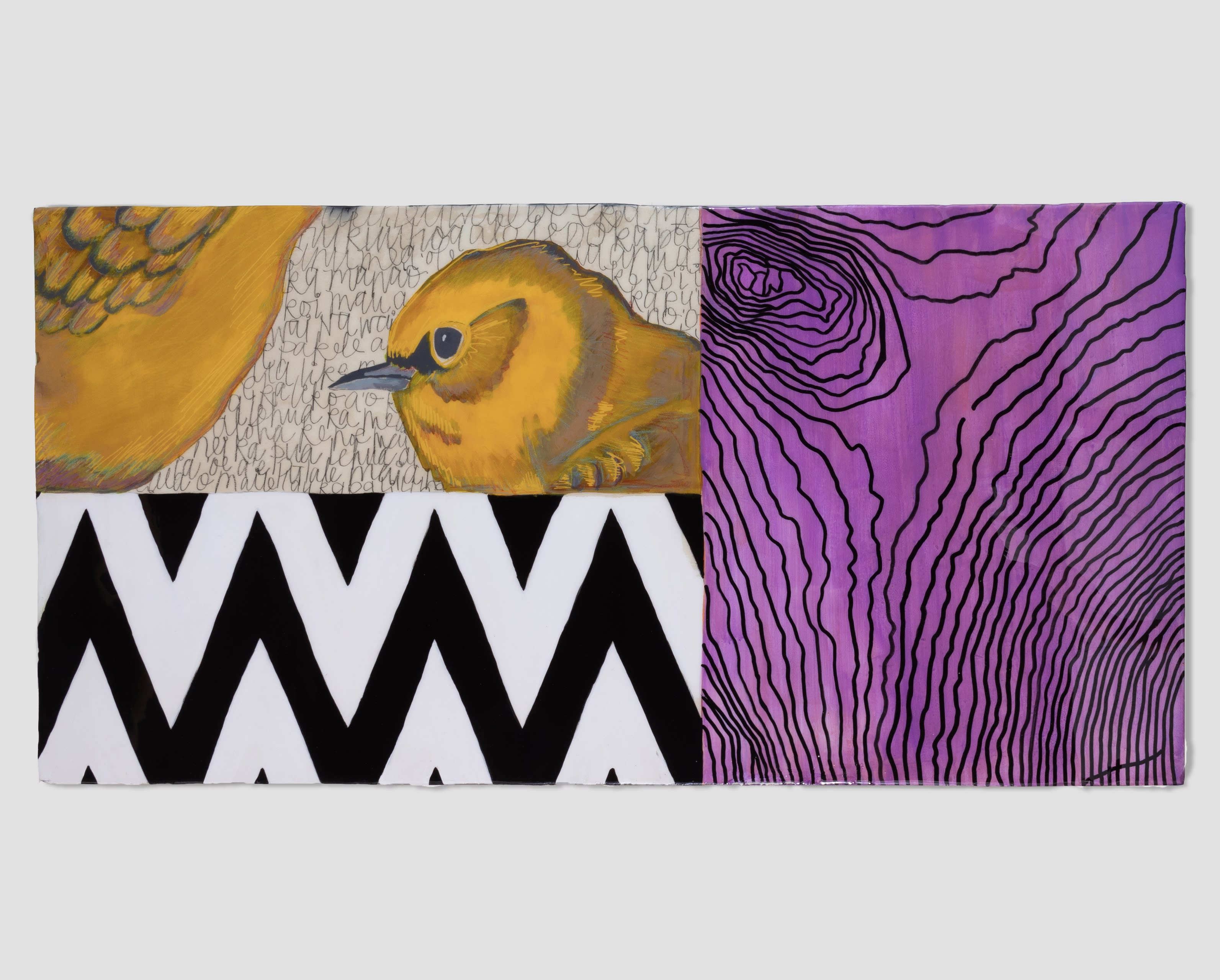
HEIDI BRANDOW | remembering your song, 2025. Acrylic, graphite, plaster, and resin on wood, 24 x 48 x 2 1/2 in (61 x 121.9 x 6.3 cm).
This Land / This Body insists that extinction and erasure are not metaphors; they are lived realities. But in making visible these entanglements, I also seek to affirm the vitality of our ancestral relationships, the power of cultural memory, and the possibilities for collective healing and futurity.
Plants Give Us Life
TOM JONES
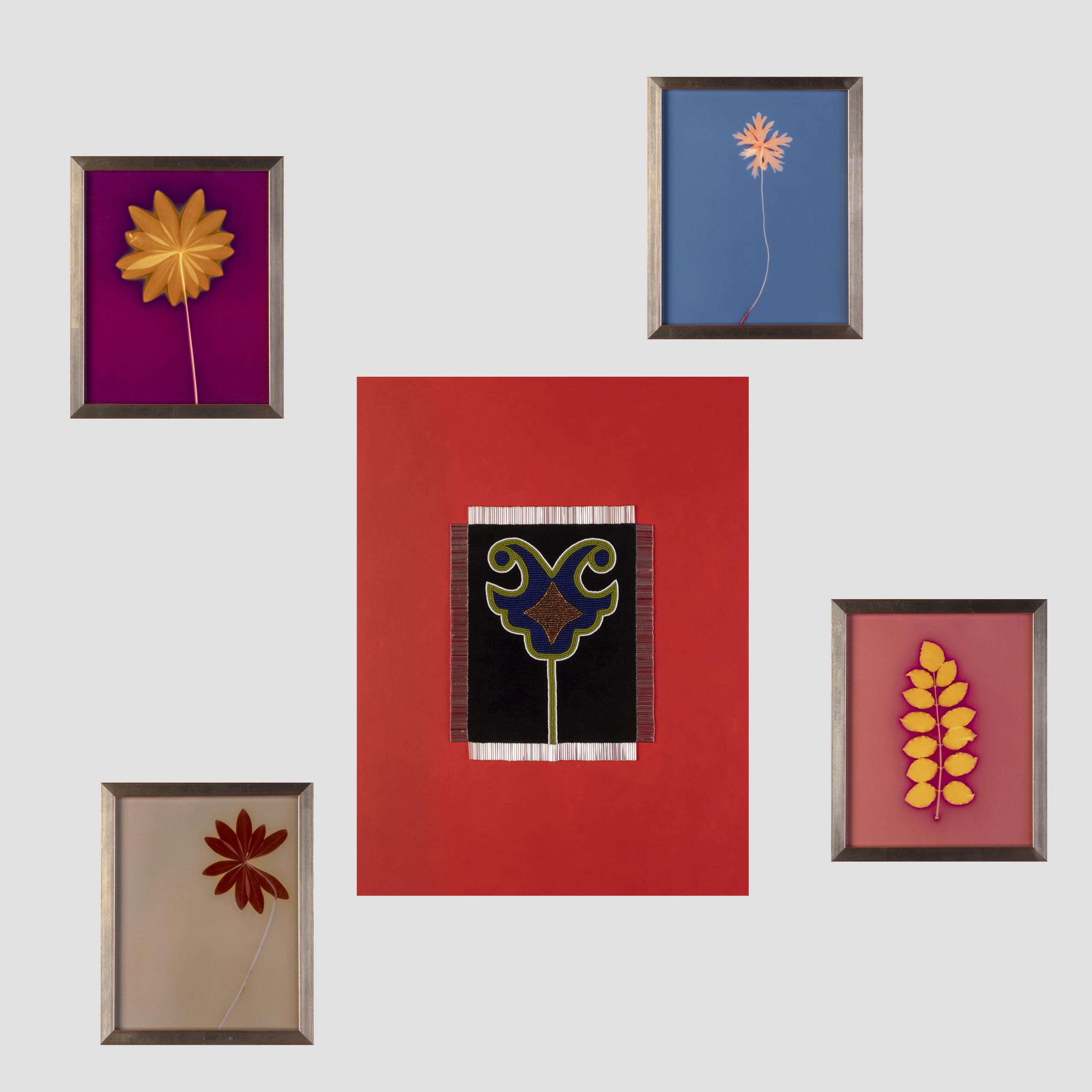
TOM JONES | Ho-Chunk and Kyrgyzstan Plant Study #1, 2025. Glass beads, velvet, acrylic, and archival digital photography. Wood panel: 24 x 18 x 1 1/2 in (60.96 x 45.72 x 3.81 cm); framed photographs: 11 x 9 x 1 3/8 in (27.94 x 22.86 x 3.49 cm); photographs: 10 x 8 in (25.4 x 20.32 cm).
Xaawį nagira waakšik hó į
Plants give us life, healing, and knowledge; and are environmental indicators. Ho-Chunk plant knowledge is passed down through families or directly gifted to an individual through fasting or dreams. My grandfather would take me along to help pick medicine, and this continues to be a lifelong learning process for me. The plant specimens in this series feature the plants and medicines that I saw during the Nomadic Art Camp exchange in Kyrgyzstan.
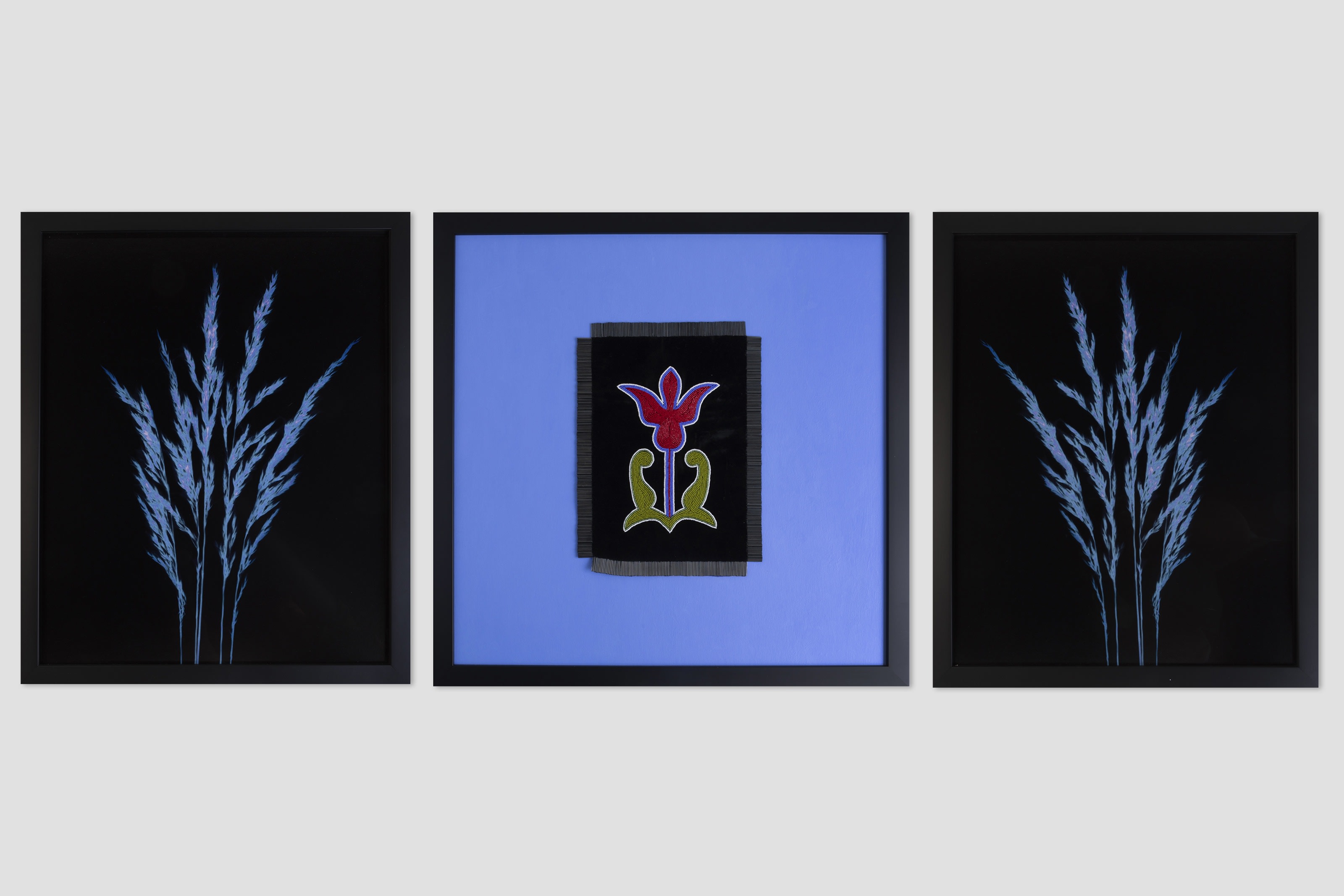
TOM JONES | Ho-Chunk and Kyrgyzstan Plant Study #3, 2025. Glass Beads, velvet, and acrylic on wood; archival digital photograph, framed wood panel: 26 x 26 x 1 1/8 in (66.04 x 66.04 x 2.86 cm), photographs: 24 x 19 1/4 in (60.96 x 48.9 cm), framed photographs: 26 x 21 1/4 x 1 1/4 in (66.04 x 54 x 3.18 cm).
As children, we are taught to be observant about everything around us. Even animals and insects can be teachers. My uncle, Kenny Funmaker stated, “One of the teachings of the Ho-Chunk people is that the Creator of all things has given us a mind. We are told to utilize it to the fullest, as far as we can, using all of our senses. We have to remember and recall everything we have heard and seen. This was a way of life with our people. The mind has capabilities beyond anyone’s imagination of what it could and can do.” Everything is connected.
Ho-Chunk beaded floral patterns are traditionally abstract in form and outlined in white. This white line creates an aura around the plant form giving it radiating energy. The same aura is created when making the lumen photographs which accompany the beadwork. Using a cameraless process, the lumen prints are created by placing each plant directly on black-and-white darkroom paper and exposing it to sunlight.
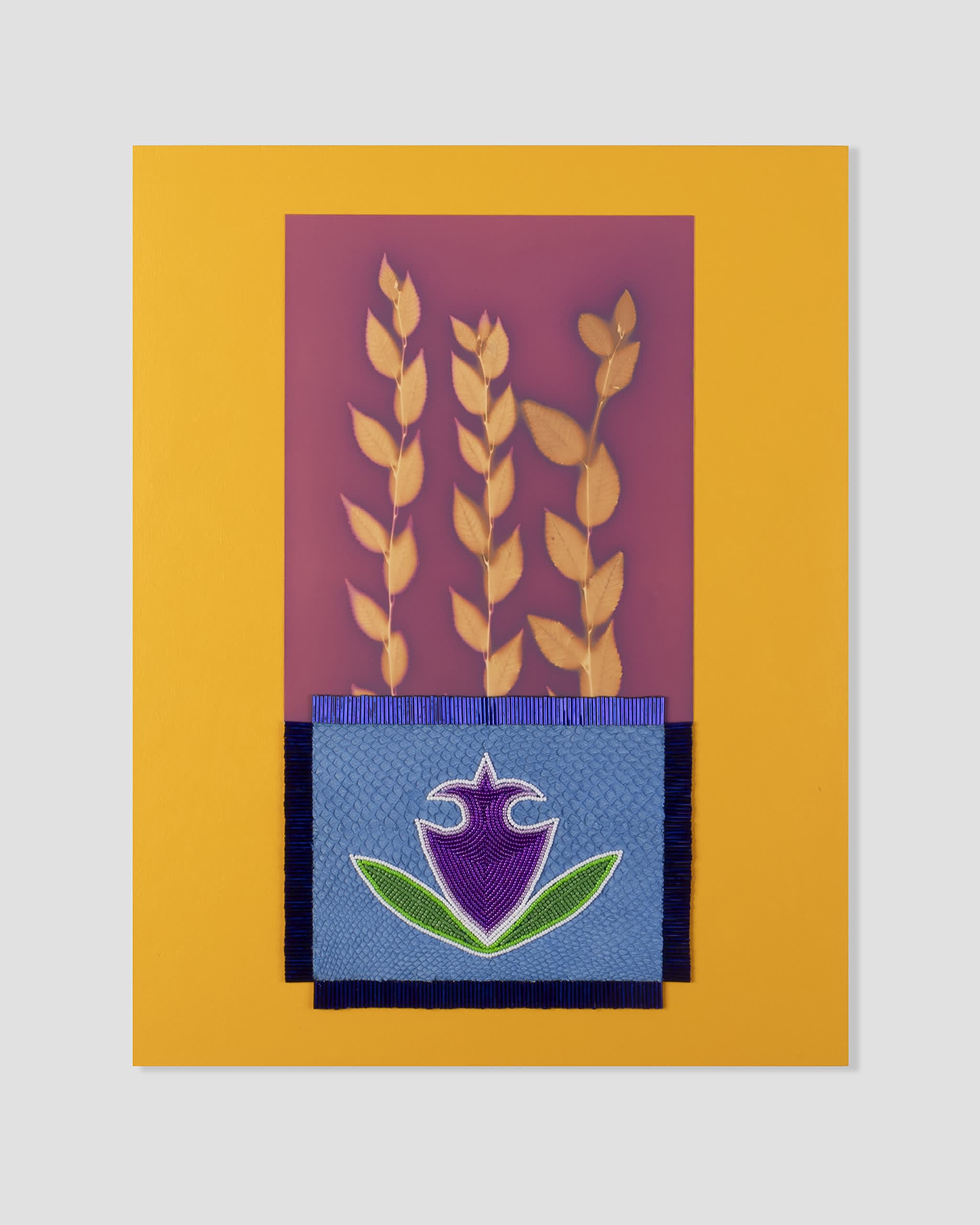
TOM JONES | Ho-Chunk and Kyrgyzstan Plant Study #4, 2025. Glass beads, salmon skin leather, and acrylic on wood; silver gelatin photograph, 18 x 14 x 7/8 in (45.7 x 35.6 x 2.2 cm).
SEE ALL WORKS
Photos by Molly Wagoner, courtesy of form & concept
